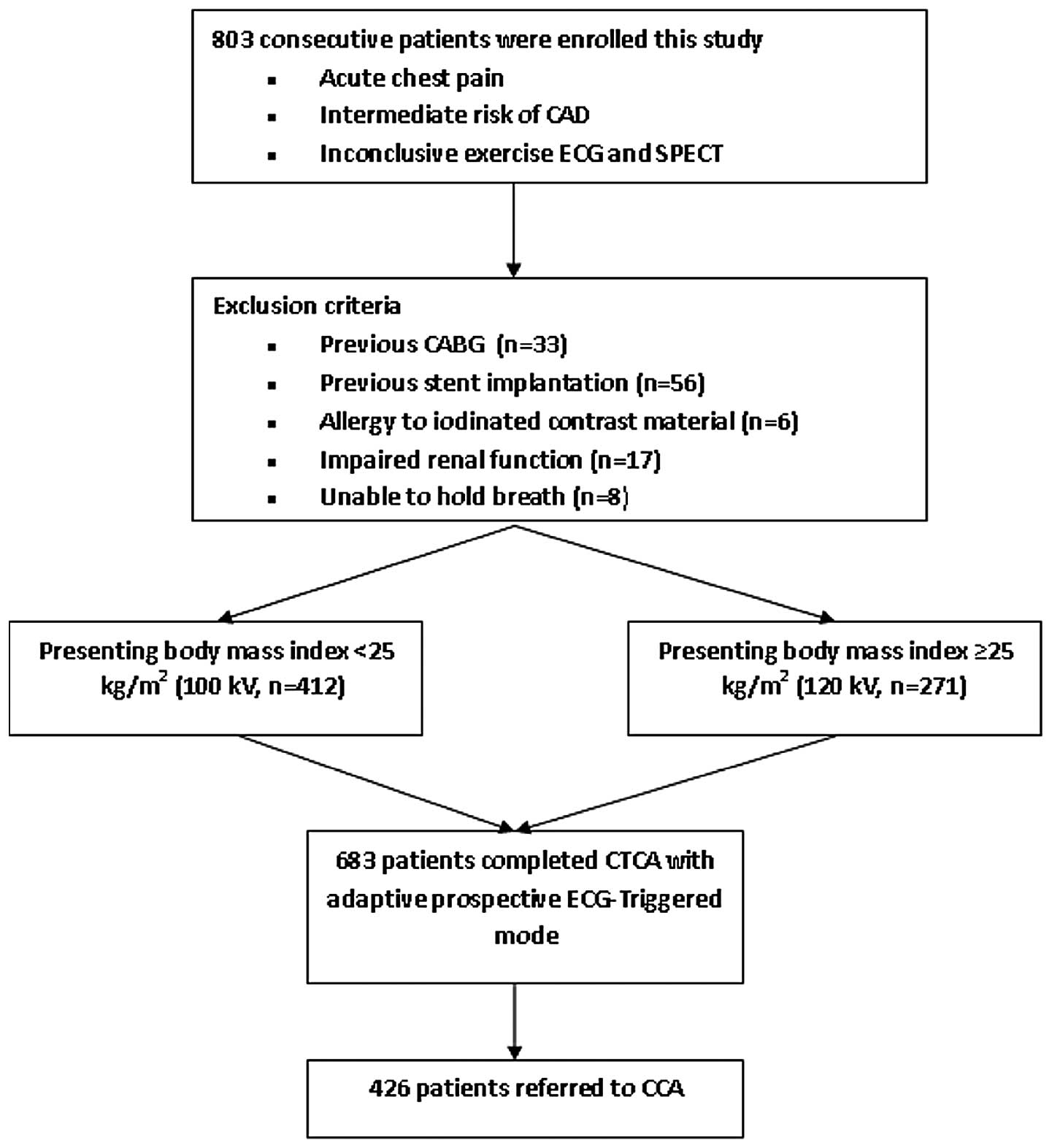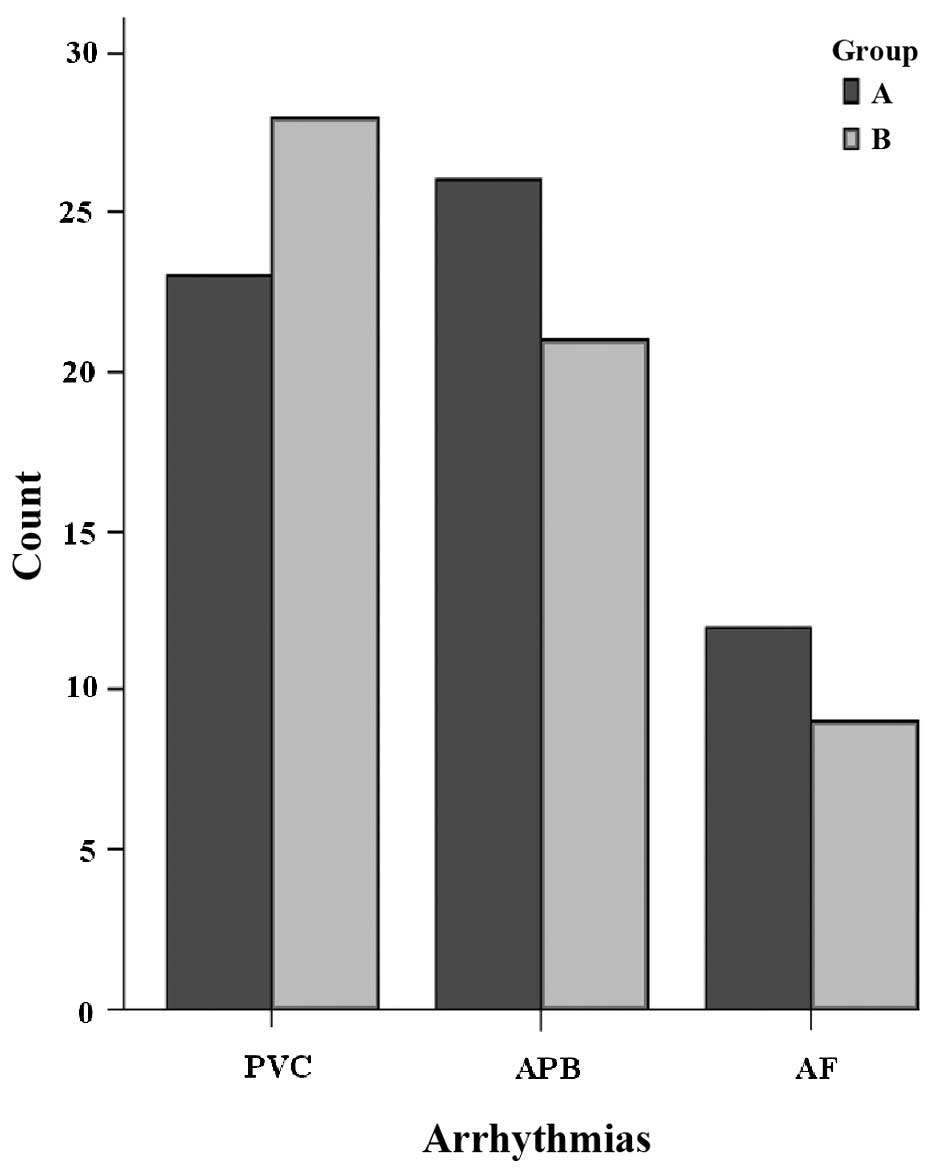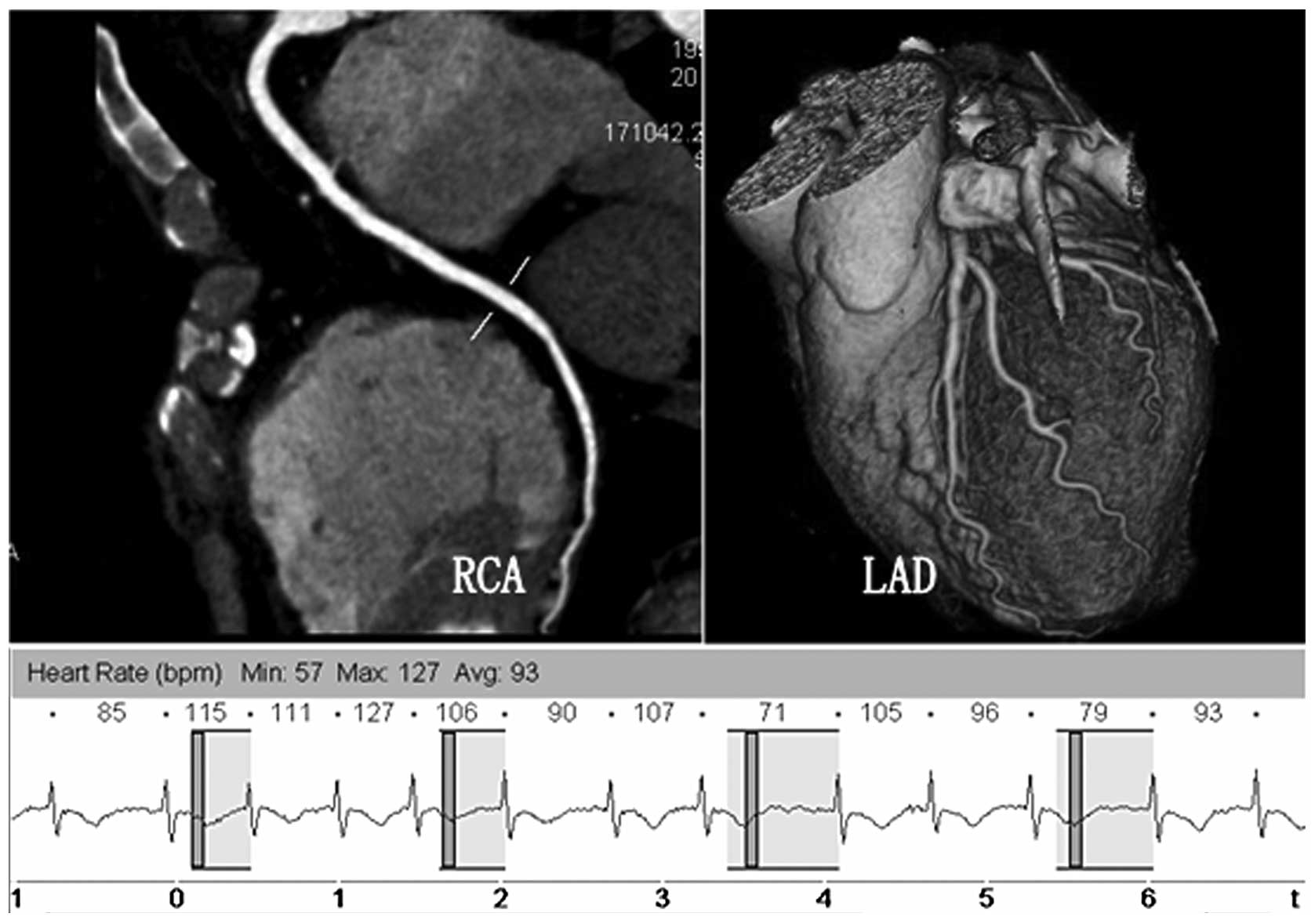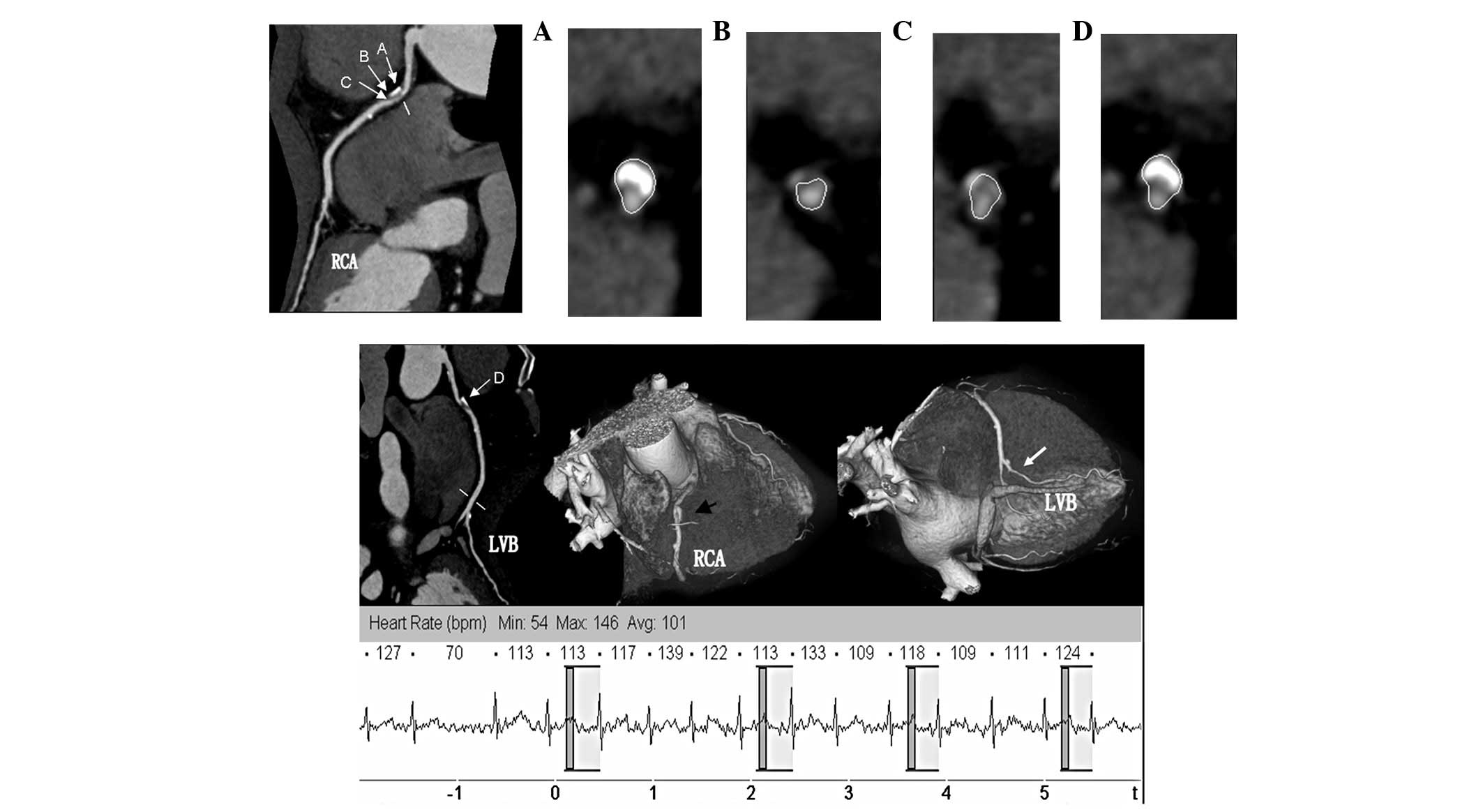|
1.
|
Schoepf UJ, Zwerner PL, Savino G, Herzog
C, Kerl JM and Costello P: Coronary CT angiography. Radiology.
244:48–63. 2007. View Article : Google Scholar
|
|
2.
|
Budoff MJ, Achenbach S, Blumenthal RS, et
al: Assessment of coronary artery disease by cardiac computed
tomography: a scientific statement from the American Heart
Association Committee on Cardiovascular Imaging and Intervention,
Council on Cardiovascular Radiology and Intervention, and Committee
on Cardiac Imaging, Council on Clinical Cardiology. Circulation.
114:1761–1791. 2006.
|
|
3.
|
Scheffel H, Alkadhi H, Plass A, et al:
Accuracy of dual-source CT coronary angiography: first experience
in a high pre-test probability population without heart rate
control. Eur Radiol. 16:2739–2747. 2006.PubMed/NCBI
|
|
4.
|
Brenner DJ and Hall EJ: Computed
tomography - an increasing source of radiation exposure. N Engl J
Med. 357:2277–2284. 2007.PubMed/NCBI
|
|
5.
|
Hausleiter J, Meyer T, Hermann F, et al:
Estimated radiation dose associated with cardiac CT angiography.
JAMA. 301:500–507. 2009. View Article : Google Scholar : PubMed/NCBI
|
|
6.
|
Cademartiri F, Mollet NR, Runza G, et al:
Improving diagnostic accuracy of MDCT coronary angiography in
patients with mild heart rhythm irregularities using ECG editing.
AJR Am J Roentgenol. 186:634–638. 2006. View Article : Google Scholar : PubMed/NCBI
|
|
7.
|
Shuman WP, Branch KR, May JM, et al:
Prospective versus retrospective ECG gating for 64-detector CT of
the coronary arteries: comparison of image quality and patient
radiation dose. Radiology. 248:431–437. 2008. View Article : Google Scholar : PubMed/NCBI
|
|
8.
|
Herzog BA, Wyss CA, Husmann L, et al:
First head-to-head comparison of effective radiation dose from
low-dose 64-slice CT with prospective ECG-triggering versus
invasive coronary angiography. Heart. 95:1656–1661. 2009.
View Article : Google Scholar : PubMed/NCBI
|
|
9.
|
Scheffel H, Alkadhi H, Leschka S, et al:
Low-dose CT coronary angiography in the step-and-shoot mode:
diagnostic performance. Heart. 94:1132–1137. 2008. View Article : Google Scholar : PubMed/NCBI
|
|
10.
|
Mulkens TH, Bellinck P, Baeyaert M, et al:
Use of an automatic exposure control mechanism for dose
optimization in multidetector row CT examinations: clinical
evaluation. Radiology. 237:213–223. 2005. View Article : Google Scholar : PubMed/NCBI
|
|
11.
|
Austen WG, Edwards JE, Frye RL, et al: A
reporting system on patients evaluated for coronary artery disease.
Report of the Ad Hoc Committee for Grading of Coronary Artery
Disease, Council on Cardiovascular Surgery, American Heart
Association. Circulation. 51(Suppl 4): 5–40. 1975. View Article : Google Scholar
|
|
12.
|
Earls JP, Berman EL, Urban BA, et al:
Prospectively gated transverse coronary CT angiography versus
retrospectively gated helical technique: improved image quality and
reduced radiation dose. Radiology. 246:742–753. 2008. View Article : Google Scholar
|
|
13.
|
Nakayama Y, Awai K, Funama Y, et al: Lower
tube voltage reduces contrast material and radiation doses on
16-MDCT aortography. AJR Am J Roentgenol. 187:W490–W497. 2006.
View Article : Google Scholar : PubMed/NCBI
|
|
14.
|
Valentin J; International Commission on
Radiation Protection: Managing patient dose in multi-detector
computed tomography (MDCT). ICRP Publication 102 Ann ICRP. 37:1–79.
2007.PubMed/NCBI
|
|
15.
|
Lang RM, Bierig M, Devereux RB, et al:
Recommendations for chamber quantification: a report from the
American Society of Echocardiography’s Guidelines and Standards
Committee and the Chamber Quantification Writing Group, developed
in conjunction with the European Association of Echocardiography, a
branch of the European Society of Cardiology. J Am Soc
Echocardiogr. 18:1440–1463. 2005.PubMed/NCBI
|
|
16.
|
Ropers U, Ropers D, Pflederer T, et al:
Influence of heart rate on the diagnostic accuracy of dual-source
computed tomography coronary angiography. J Am Coll Cardiol.
50:2393–2398. 2007.PubMed/NCBI
|
|
17.
|
Johnson TR, Nikolaou K, Wintersperger BJ,
et al: Dual-source CT cardiac imaging: initial experience. Eur
Radiol. 16:1409–1415. 2006.PubMed/NCBI
|
|
18.
|
Deetjen A, Möllmann S, Conradi G, et al:
Use of automatic exposure control in multislice computed tomography
of the coronaries: comparison of 16-slice and 64-slice scanner data
with conventional coronary angiography. Heart. 93:1040–1043. 2007.
View Article : Google Scholar
|
|
19.
|
Fink C, Krissak R, Henzler T, et al:
Radiation dose at coronary CT angiography: second-generation
dual-source CT versus single-source 64-MDCT and first-generation
dual-source CT. AJR Am J Roentgenol. 196:W550–W557. 2011.PubMed/NCBI
|
|
20.
|
Lu B, Lu JG, Sun ML, et al: Comparison of
diagnostic accuracy and radiation dose between prospective
triggering and retrospective gated coronary angiography by
dual-source computed tomography. Am J Cardiol. 107:1278–1284.
2011.PubMed/NCBI
|


















